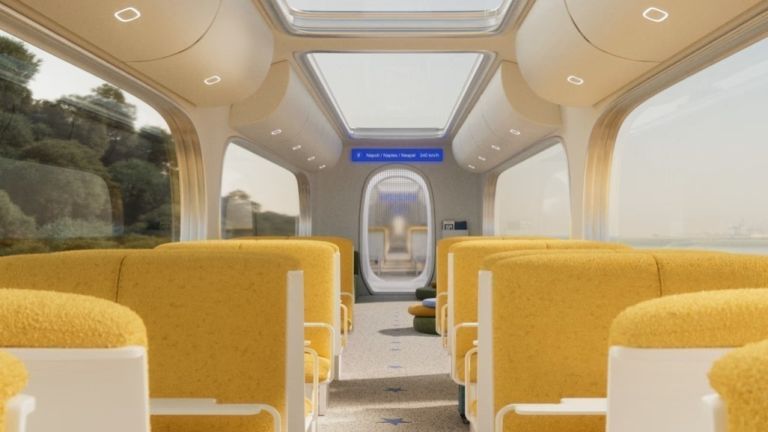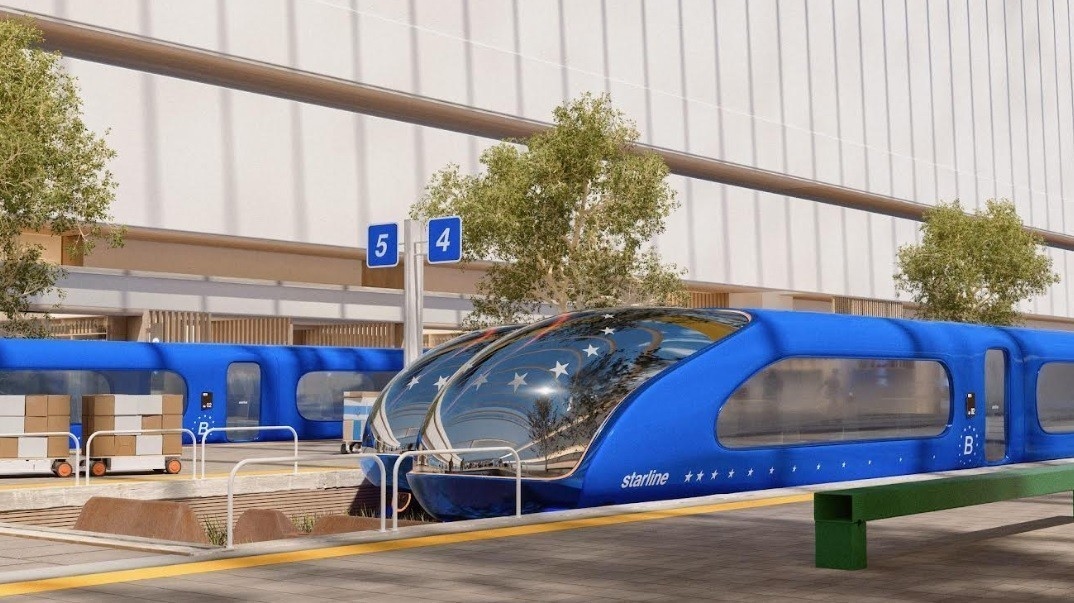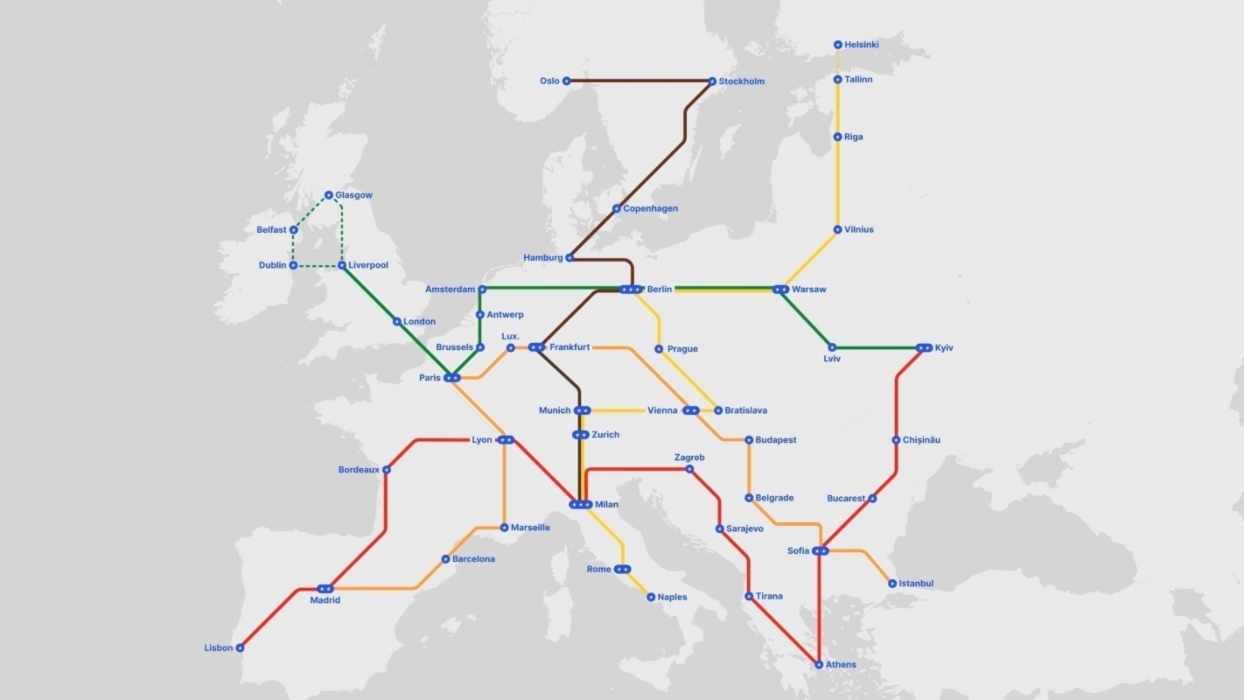Paris–Athens in Six Hours: The Vision of a “European Metro”

Πηγή Φωτογραφίας: 21st Europe//Παρίσι //Europe is dreaming of a new transport revolution. The think tank 21st Europe, in collaboration with design studio Bakken & Bæck, has released its study “A High-Speed Future for Europe”
Europe is dreaming of a new transport revolution. The think tank 21st Europe, in collaboration with design studio Bakken & Bæck, has released its study “A High-Speed Future for Europe”, presenting the ambitious Starline project – a pan-European high-speed rail network that promises to connect the continent like never before.
Today’s Reality: A Fragmented and Outdated Rail System
The report highlights a blunt truth: “Europe’s rail system reflects its political complexity: fragmented, uneven, often slow.”
- Long-distance high-speed travel today is largely by air.
- Rail lags behind, trapped by national borders, outdated systems, and lack of cohesion.
- The result? A Europe that feels less connected than it should.

The Starline Vision: A ‘European Metro’
Starline aims to completely reshape rail travel by 2040:
- 22,000 km of new high-speed rail lines running at 300–400 km/h
- 39 hubs connecting major capitals and cities across the continent
- Athens–Milan on a single route, Athens–Paris with just two transfers
- Helsinki–Berlin in just over five hours
- Up to 80% reduction in short-haul flights
“Blue high-speed trains gliding seamlessly across borders, turning a patchwork of national lines into one unified experience,” the report envisions.

Europe vs. China and Japan
The contrast is striking:
- China has built 42,000 km of high-speed rail in just two decades, with trains regularly hitting 350 km/h.
- Japan’s Shinkansen made high-speed rail a daily reality decades ago.
- Europe, according to 21st Europe, “already has the expertise – Starline is about applying it at scale, across borders, friction-free.”
For Passengers and Freight Alike
Starline is not just about passengers. It is designed to integrate freight transport directly into its stations, helping reduce Europe’s reliance on trucks and short-haul flights.
This could empower SMEs to better participate in the single market by lowering transport costs and improving logistics.
Financing: Public + Private Partnership
The proposal envisions a hybrid model:
- Public funding for infrastructure,
- Private operation for efficiency,
- With strong public oversight to guarantee fairness and safety.
“A vision of this scale cannot be built through a purely investor-driven, American-style model. It needs a balanced approach between public and private financing, anchored in European priorities,” the authors note.
The Bigger Picture
The think tank wants Starline to be recognized as a “strategic European project”, echoing Mario Draghi’s call for bold investments in Europe’s competitiveness and resilience.
Because beyond trains, this is about something deeper:
- A more connected Europe,
- A greener Europe (with fewer planes in the sky),
- A more competitive Europe, able to stand its ground against the U.S. and Asia.
The vision is bold: A “European Metro” that will not only transform how we travel, but how we experience Europe itself.
Source: pagenews.gr
Διαβάστε όλες τις τελευταίες Ειδήσεις από την Ελλάδα και τον Κόσμο






Το σχόλιο σας